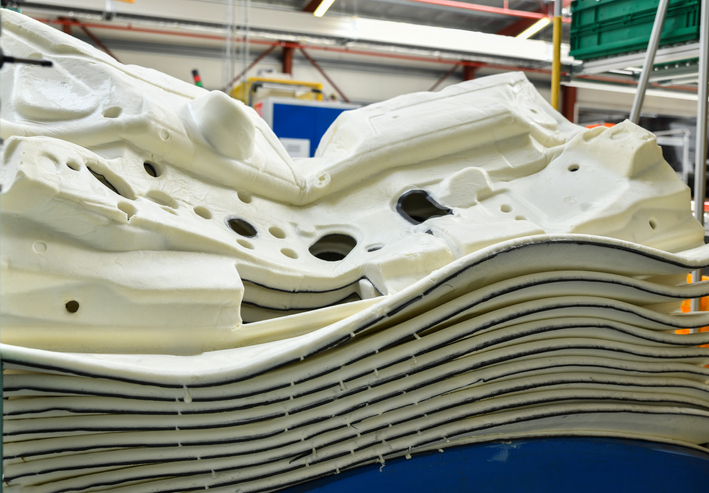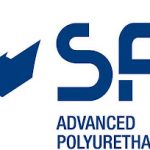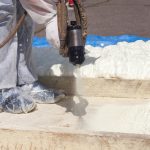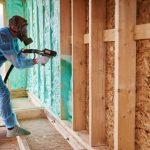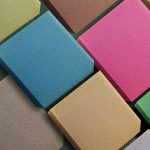Get More from Your Chemical Mixture
Polyurethane foam properties are not fixed constants. The versatility of the core material is seen in the many ways that polyurethane is used across virtually every industry. Flexible polyurethane foam is used for cushioning, mattresses, and furniture. Rigid foam is a mainstay in the insulation and construction fields. Molded foam is essential in the automotive industry. Polyurethane can be used as an adhesive, as a sealant, in shoes and sporting equipment, and in countless other ways.
But every use requires different properties. Achieving these different properties begins with the initial chemical mixture. All polyurethane is a mixture of two primary chemical materials — polyols and diisocyanates. The ratio of these primary components will leave the ensuing mixture with different traits and attributes and thus create mixtures suited for different applications. In addition, the way that mixture is produced will also impact the polyurethane foam cell structure and the resulting performance of that foam.
Gas nucleation introduces another variable into that mixture that can provide more specific tuning for how that particular polyurethane foam will perform and in its cell structure. Depending on the gas used, gas infusion can increase the overall quality of the mixture or add polyurethane foam properties.
By changing the ratio of chemical components used, the mixing method, and if/which gas nucleation process is employed, polyurethane foam manufacturers can create different polyurethane foam properties tailored to specific applications. Today, we’ll examine the role of gas nucleation in adding specific characteristics to your polyurethane mixture.
Mixing with consistency: Learn more about what goes into the right polyurethane mix head, and how Linden has options for every application.
Add Important Polyurethane Foam Properties with Gas Nucleation
Gas nucleation, or gas infusion, offers an additional way for polyurethane producers to add or enhance the properties of the foam they make. In general terms, most gas infusion efforts will improve the overall cell geometry of polyurethane foam, especially in applications that require high-strength performance. Cell geometry, in this case, refers to the mixture’s ability to maintain the characteristics you want to establish.
Better cell geometry ensures there is conformity throughout the material. For instance, if the foam material is used for packaging padding or as mattress filling, then improved cell geometry means that the material will have consistent firmness or softness throughout. With substandard cell geometry, the foam may lack the ability to remain consistent when dispersed into a mold or onto a surface, and gaps could result in the final product.
Gas infusion helps guarantee some of the final properties for a particular polyurethane application while also reducing the likelihood of material issues or problems. Failing to produce reliable, complex cell geometry can lead to damaged or wasted final products, both of which increase overall production time and costs.
The primary choice for which gasses to use for nucleation comes down to deciding between carbon dioxide (CO2) and nitrogen (N2). Both have their preferred uses and can add additional properties to the polyurethane mixture.
Let’s start with CO2. When distributed homogeneously through your chemical mixture, this gas can reduce the overall weight of the material as well as the amount needed to achieve the wanted results. The benefit is two-fold: manufacturers use less material in their production process to realize cost savings, and the lighter, enhanced sound absorption properties of the end product make it beneficial for many industries, such as transportation and building construction.
Linden Polyurethane offers a CO2 Gas Infusion(™) Blending Unit that manages the even distribution and dissolution of CO2 into the polyol component of your polyurethane formulation. This system continually monitors and updates the level of CO2 in your polyurethane mixture, which in turn regulates CO2 consumption — and lowers material cost — while adding the aforementioned properties. Other notable benefits of this system include:
- Helps your organization reach up to a 20% reduction in chemical costs
- Fully automated, self-contained, and easy to operate on a daily basis
- Can be integrated into an existing polyurethane metering system (Linden produced or otherwise)
- Supported by a best-in-class warranty and repair program
Learn more about the Linden CO2 gas infusion system here.
Polyurethane foam properties enhanced when introducing N2 into your mixture include improving mixing quality. Polyurethane foam, by using a variety of advanced mix heads, can be applied to an array of open and closed molds as well as sprayed for different applications. Ensuring a consistent level of quality across each of these different methods can be a challenge.
But with N2 gas nucleation, the mixture is dispensed more evenly and the production quality improves substantially. With N2 infusion, the material distributed on a surface will see fewer streaking issues (or runs) as well as fewer instances of failing to fill correctly. In general, adding N2 will lead to stronger, higher-performing distribution.
With Linden Polyurethane’s Dry Air/N2 Gas Infusion Blending Unit, you’ll be able to better control critical aspects of the application of your mixture material. This system will help prevent streaks and runs in molding complex geometries or part configurations and is more accurate than specific gravity (SG) sampling. Other advantages include:
- Improves wet-ability and mixing quality as well as eliminates surface defects
- Helps in molding complex geometries and part configurations
- Improves foam characteristics and reduces urea formation
- Integrates into an existing polyurethane metering system (Linden or otherwise)
- Supported by a best-in-class warranty and repair program
Learn more about the Linden N2 gas infusion system here.
Add efficiency with storage solutions: Learn more about Linden’s bulk chemical bulk and chemical blending systems.
Ensure Your Polyurethane Foam Properties with the Right Partner
Linden Polyurethane has been designing, engineering, and manufacturing the equipment needed for the production of polyurethane and for adding desired properties to the versatile material for nearly 40 years. Using only the highest quality materials and components, Linden Polyurethane adheres to exacting standards of precision engineering with every system we produce. No part, device, or piece of equipment comes off the shelf — each is manufactured according to your specifications and designed to support your production goals immediately and far into the future.
Besides our manufacturing capabilities, Linden Polyurethane backs the performance of all our offerings with a dedicated polyurethane foam testing lab. Our 7,000-square-foot testing and production facility can conduct feasibility trials, testing for short-run production, and ongoing production evaluation. With our testing lab, we can identify whether the polyurethane foam properties desired are the ones being achieved within your application and equipment parameters, and much more.
Linden Polyurethane is here to support your success, no matter your production goals, equipment needs, or application standards.

